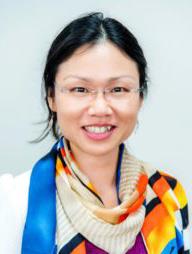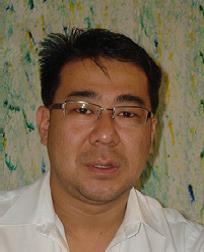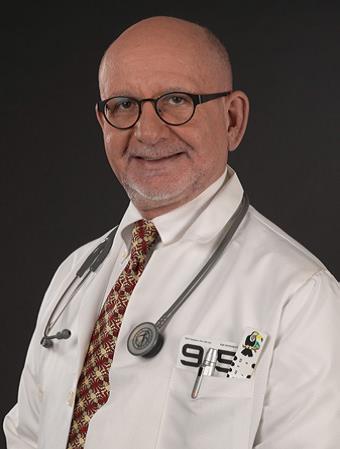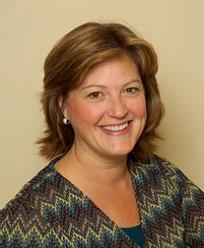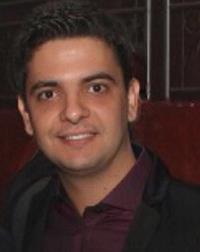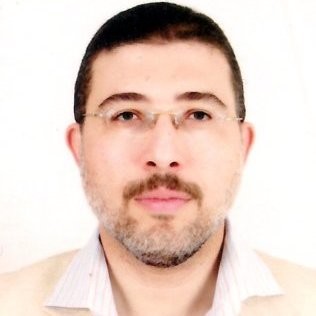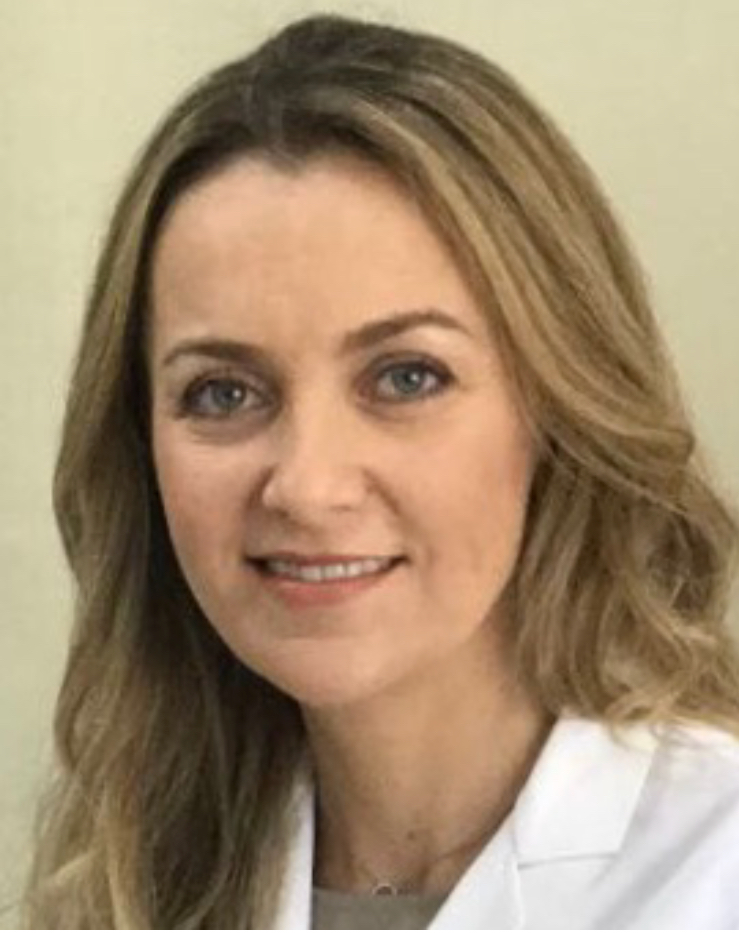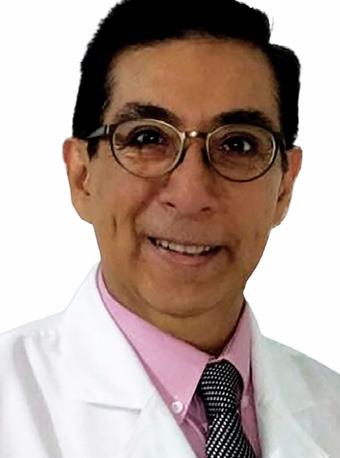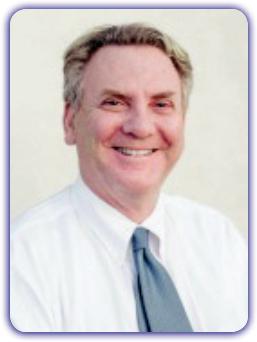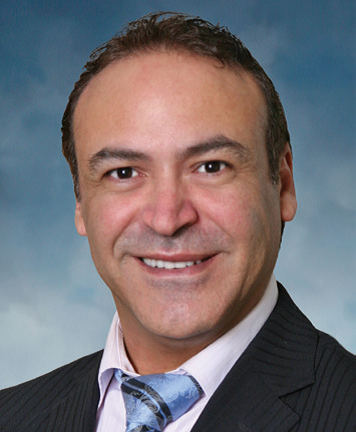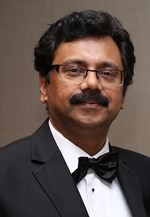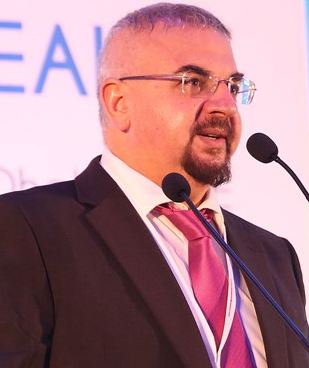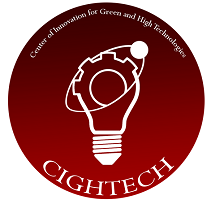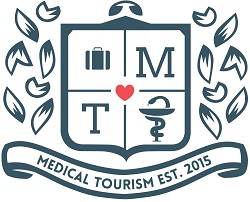
SAV-IOL (Swiss Advanced Vision) is a Swiss manufacturer of high quality innovative intraocular lenses (IOLs) designed for cataract surgery. In 2009 SAV-IOL began developing a brand-new lens enabling a continuous vision using the patented EDOF technology called, "Instant Focus." Commercial activity started in January 2016 with the launch of the premium hybrid lens “InFo”. Since then, SAV-IOL is constantly expanding its portfolio of intraocular lenses using EDOF technology to offer cutting-edge solutions to patient’s worldwide suffering from cataracts. SAV-IOL's portfolio contains three main products. Eden, a premium hybrid design, Lucidis, an advanced refractive design, and Harmonis, a customizable hybrid design. SAV-IOL is also working on an electronic lens project called R-TASC, scheduled to totally disrupt the world of Ophthalmology. The R-TASC Project is an active lens with real-time autofocus, powered by a combination of solar light in conjunction with induction, and able to be recalibrated via an app-controlled system.
Visit SAV-IOL website to learn more: www.sav-iol.com
Abbey FLURY |Marketing Specialist
Email: abbey.flury@sav-iol.com | Tel: D +41 32 566 54 03
SAV-IOL SA - Route des Falaises 74 | 2000 Neuchatel - Switzerland
P +41 32 566 54 00 | sav-iol.com
Eye 2019 | Swiss Advanced Vision | Exhibitor

Keynote Speaker | Eye 2019 | Home page Banner | Dubai

Keynote Speaker | Eye 2019 | Dubai
Theme: Enlightening the Vision & Exploring the Novel Research in Eye
Eye 2019
Dear Potential Researchers, Scientists, Industrialists & Students,
Join us for World Eye and Vision Congress
Update your skills, Meet your academic heroes, Engage in high-level debates and refine your ideas enhance your knowledge base, and broaden your horizons, Visit a new place and have fun, - all in one place!
Date: December 09-10, 2019
Venue: Dubai, UAE
Fostering good practice through CPD Certification

If you are interested to be a part of this event as a speaker or delegate!
Email at: lucywatson@memeetings.net
Call at: 1-201-380-5561 (Extension No- 7007)
WhatsApp at: +44 7723584505
The World Eye and Vision Congress which brings together a unique and international mix of large and medium pharmaceutical, biotech and diagnostic companies, leading universities and clinical research institutions making the conference a perfect platform to share experience, foster collaborations across industry and academia, and evaluate emerging technologies across the globe. Ophthalmology Congress maximizes the opportunity to interact with and learn from your peers from across the country and across the globe it held with the discussions on Cornea and External Eye Disease, Retina and Retinal Disorders, Neuro-Ophthalmology, Glaucoma: Visual Field Loss, Ocular Microbiology and Immunology, Novel Approaches to Ophthalmology Therapeutics and many more.
Meet significant Ophthalmologists, Optometrists Researchers Clinicians from USA, UK, Italy, Japan, Finland, Germany, Switzerland, Romania, Russia, Singapore, UAE, China, Turkey, Spain, South Africa, Taiwan, Chicago, Malaysia, India, Indonesia, Australia and many more countries.
Conference Series Ltd Organizes 2000+ conferences, 500+ workshops and 200+ symposiums on Clinical, Medicine, Pharma and Science & Technology every year across USA, Europe, Asia, Middle East, Australia and UK with support from 1000 more scientific societies and Publishes 500 open access journals which contains over 30000 eminent personalities, reputed scientists as editorial board members.
Retinal disorders, optic atrophy, and lesions of the higher visual pathways are the main anatomical causes of visual loss in children. WHO reports that, 285 million people are estimated to be visually impaired worldwide: 39 million are blind and 246 have low vision. About 90% of the world’s visually impaired live in low-income settings 82% of people living with blindness are aged 50 and above. Globally, uncorrected refractive errors are the main cause of moderate and severe visual impairment; cataracts remain the leading cause of blindness in middle- and low-income countries. Many European associations are involved in Ophthalmology and many eye banks are actively promoting the donation of eyes in Europe, addressing a gap in the ophthalmic market, the global ophthalmic market was valued at $10.3 billion in 2010 and is estimated to reach $13.2 billion in 2018.
Conference Highlights:
- Eye development cell biology & Novel Technology
- Refractive Surgery Ocular Surface Disease
- Glaucoma
- Retina: Innovations, Research, New tech
- Dry eye and Red eye Assessments
- Neuro-ophthalmology
- Pediatric Ophthalmology & Infant Vision
- Optometry & Contact Lenses
- Ocular Pharmacology
- Oculoplastics
- Ocular tumors-Ocular melanoma
- Low Vision & quality-of-life
- Eye Surgeries
- Gene therapy in Ophthalmology
- Anesthesia for Ophthalmic Surgery
- Endocrine, nutritional and metabolic diseases
- Ocular complications management
- Novel diagnostic prognostic and therapeutic tools
- Eye strains and computer vision syndrome
Track – 1
Eye development cell biology & Novel Technology
For over a century, analysts have discussed how crude embryonic antecedent cells offer ascent to the optic glass and retina. The retina, which begins from the parallel midbrain, creates through the development of the optic vesicle and the consequent development of the optic glass with its unpredictable two-walled structure with retinal colour epithelium on the external divider and the neural retina on the inward divider. A predominant hypothesis is that signs and associations with encompassing tissues, for example, the focal point, instigate the arrangement of the optic container. Others have proposed that this procedure is a cell-self-sufficient process and can act naturally started and shaped without outward acceptance.
The major microorganisms such as bacteria, virus, fungi and parasites are into the human body and are spread and attacks to the interior surface of eye. The interior of the eye lacks lymph vessels but is highly vascularized, and many immune cells reside in the layer of the eye (Uvea), mostly macrophages, antigen cells, and mast cells. These cells fight off pathogens infections, and intraocular inflammation can manifest as uveitis or retinitis. The cornea of eye is especially wide range of microorganisems.it uses to moist mucosal surface make to the cornea particularly susceptible to attack.
Track – 2
Refractive Surgery Ocular Surface Disease
The refractive surgery team uses precision laser eye surgery techniques and specialised lens implants to correct focusing problems such as short sight (myopia), long sight (hypermetropia), irregular focus (astigmatism) and loss of reading vision (presbyopia). A refractive error, for example, partial blindness (near sightedness), farsightedness (hyperopia), astigmatism or presbyopia, refractive surgery is a strategy for revising or enhancing vision. There are different surgical methods for modifying eye's centering capacity by reshaping the cornea, or clear, round vault at the front of your eye. Different techniques include embedding a focal point inside the eye. The most generally performed kind of refractive surgery is LASIK (laser-aided situ keratomileusis), where a laser is utilized to reshape the cornea. For individuals who are myopic, certain refractive surgery systems will diminish the bend of a cornea that is excessively steep so that the eye's centering power is reduced. Pictures that are engaged before the retina, because of a more drawn out eye or soak corneal bend, are driven nearer to or specifically onto the retina following surgery. Pictures that are locked in past the retina, due to a short eye or level cornea, will be pulled closer to or particularly onto the retina after surgery.
Track – 3
Glaucoma
Glaucoma is a multifactorial optic neuropathy that influences more than 50 million populations and is the second driving reason for visual deficiency around the world. Glaucoma is brought on because of the harm of the optic nerve , which prompts to high intraocular weight and on the off chance that it is untreated then it will increments to vision misfortune with the start of imperceptibly blind sides at the edges of visual field took after by visual deficiency. Optic nerve harm is the primary driver for glaucoma alongside the few fundamental causes which are obscure. As indicated by world wellbeing association (WHO) glaucoma is the second real reason for visual deficiency over the globe. The clutters can be generally partitioned into two principle classifications, open-point glaucoma and shut edge glaucoma.
Track – 4
Retina: Innovations, Research, New tech
Any eye issue identification is mostly finished with the assistance of innovation. The eye is an extremely delicate organ, and the internal conclusions of the eye are impossible with the assistance of innovation. Hence, the advancement in the eye is vital for discovery and treatment of eye abandons. In this quickly developing innovation world, there are a huge number of advancements and thoughts. Advancement in eye causes the visually impaired individuals to see the world as per their craving. Eye mind encourages us to know the vision needs. It shows thorough eye mind goes past a medicine for glasses or contact focal points.
Track – 5
Dry eye and Red eye Assessments
Dry eye issue is an average condition in which your eyes disregard to convey enough incredible tears to keep themselves agreeably lubed up. Late research suggests that up to 66% of people will encounter the evil impacts of the turmoil eventually in their lives.
Dry eye is a condition in which a man doesn't have enough quality destroys to oil and bolster the eye. Shreds are principal for keeping the quality of the front surface of the eye and for giving clear vision. Blepharitis ordinarily is related with an abundance of microbes that live along the edges of the eyelids and these microscopic organisms increase and make a structure called a biofilm. This biofilm turns into a poisonous situation Bacteria and produces exotoxins that reason aggravation of oil-discharging organs in the eyelids called meibomian organs. This causes a condition called meibomian organ brokenness, which causes (and declines) dry eye inconvenience.
Track – 6
Neuro-ophthalmology
Neuro-Ophthalmology is the association of neurology and ophthalmology, the sensory system maladies which influence the pupillary reflexes, vision, eye developments are contemplated under the branch of neuro-ophthalmology. Diplopia, visual myasthenia gravis, optic neuritis, optic neuropathy, papilledema, idiopathic intracranial hypertension, mind tumours or stroke influencing vision, unexplained visual misfortune, cerebral pains, blepharospasm or hemifacial fit are the few generally illnesses related with neuro-ophthalmology.
Visual Neuroscience focuses on Visual system of human brain mainly the visual cortex of the brain. The aim is to understand functioning of the visual neural network and how it influences visual perception and behaviour. It mainly focuses on how eyes and brain responds to light, how perception of images happen in the brain and how mind recreates the world like reality as it really is.
Track – 7
Pediatric Ophthalmology & Infant Vision
As your youngster develops their eyes experience a time of quick advancement, making them especially vulnerable to contracting eye conditions, for example, squints, apathetic eye or refractive mistakes. Frequently your tyke will be ignorant that an issue with their vision is affecting their execution, yet these basic issues could influence their perusing achievement, coordination and social trust in the classroom and past. Pediatric ophthalmologists concentrate on the improvement of the visual framework and the different ailments that disturb visual advancement in pediatric. Paediatric ophthalmologists additionally have mastery in dealing with the different visual infections that influence kids. Pediatric ophthalmologists are qualified to perform complex eye surgery and additionally to deal with pediatric eye issues utilizing glasses and solutions.
Track – 8
Optometry & Contact Lenses
Optometry is a social insurance calling that practices on the eyes and related structures, and vision, visual frameworks, and vision data handling in people. Optometrists (otherwise called Doctors of Optometry or Ophthalmic Opticians relying upon the nation) are prepared to endorse and fit focal points to enhance vision, and in a few nations are prepared to analyse and treat different eye sicknesses. Optometric doctors and optometry-related associations communicate with legislative offices, other social insurance experts, and the group to convey eye-and vision-care. A contact focal point is a therapeutic gadget. Since the focal point reaches the eye, an exact fit is fundamental. An intensive assessment and fitting is expected to safeguard a solid contact focal point fit. Numerous styles of focal points are accessible. Contact lenses may likewise be prescribed by ophthalmologists as therapeutically essential in extraordinary occurrences when contact focal points accomplish the best visual potential that eyeglasses can't convey. This might be because of an unpredictable corneal surface, for example, in keratoconus, corneal injury, and post-surgical anomaly.
Track – 9
Ocular Pharmacology
Ocular Pharmacology assign with basic and clinical research about biopharmaceuticals. Ocular pharmacology & drug delivery valuable information on the practical uses of drugs in primary eye care. Conversation of the pharmacology of ocular drugs comparatively anti-infective agents, anti-glaucoma drugs, and anti-allergy drugs lead to more in-depth information on ocular drugs used to treat a diversity of disorders, including diseases of the eyelids, corneal diseases, ocular infections, and glaucoma. The major challenge faced by today’s pharmacologist and formulation scientist is ocular drug delivery. Thematic eye drop is the most proper and patient complaisant route of drug administration, especially for the treatment of proceeding segment diseases. Delivery of drugs to the targeted ocular tissues is confined by various precorneal, dynamic and static ocular barriers.
Track – 10
Oculoplastics
Oculoplastics surgery largely consists of traditional approaches to many of the encountered diseases. Our specialty has well-established methods for most surgeries and we use our good old fashioned surgical instruments, but advances are continuously being made to improve patient outcomes while at the same time abiding by sound surgical and medical principles according to anatomy. These advances are made in both surgical and non-surgical approaches to functional and aesthetic Oculoplastics surgery. There has been a lot of excitement in Oculoplastics surgery recently. New surgical techniques, many of which are less invasive, new cosmetic tools with particular utility around the eyes. The aging baby boomer population has increased demand for cosmetic procedures; the ability to work outside the traditional insurance system has added momentum to the interest and curiosity of ophthalmologists.
Track – 11
Ocular tumors-Ocular melanoma
Visual oncology includes the examination and treatment of tumour’s that happen in or around the eye. These tumours may cause vision misfortune or loss of the eye itself; a few tumours are conceivably deadly, while others might be kind yet extremely distorting. Specialists at Mass. Eye and Ear have made earth shattering advances in the field of visual oncology. These incorporate the recognizable proof and disconnection of the retinoblastoma quality, the main known tumours-silencer quality, which shaped a critical foundation in the atomic premise of disease. Our specialization is additionally credited with the improvement of proton bar illumination, the highest quality level of treatment for uveal melanoma. Progressing research endeavours incorporate investigations of disease helplessness qualities and biomarkers, inventive careful procedures for visual malignancies, and growing new remedial methodologies for retinoblastoma and other visual growths.
Track – 12
Low Vision & quality-of-life
Low Vision and quality-of-life is representing in the research, development, and manufacture of ophthalmic medical devices to preserve and improve people’s eyesight and health. It provides intraocular lenses and lens materials. Vision science is the scientific study of vision. It is ability to explain the surrounding environment using light in the visible spectrum reflected by the objects in the environment. Vision science encompasses all studies of vision.
Track – 13
Eye Surgeries
Eye surgery, otherwise called ocular surgery, is medical procedure performed on the eye or its adnexa, commonly by an ophthalmologist. The eye is an exceptionally delicate organ, and requires extraordinary care previously, amid, and after a surgery to limit or avert additionally harm. A specialist eye specialist is in charge of choosing the fitting surgery for the patient, and for taking the important wellbeing precautionary measures. Notices of eye medical procedure can be found in a few antiquated writings going back as right on time as 1800 BC, with waterfall treatment beginning in the fifth century BC. Today it keeps on being a broadly honed sort of medical procedure, having created different systems for treating eye issues.
Track – 14
Gene therapy in Ophthalmology
Genetic ophthalmic ailment is one of the main sources of visual deficiency and incorporates issue influencing all structures of the eye from the foremost to back portion, for example, albinism, corneal dystrophy, aniridia, essential glaucoma, pediatric waterfalls, retinitis pigmentosa, Stargardt sickness, and innate optic neuropathy. Many systemic hereditary maladies and disorders, for example, Marfan disorder, neurofibromatosis, mitochondrial clutters, and chromosomal variation from the norm disorders have noteworthy visual pathology. Whilst uncommon separately, together these scatters are a critical reason for visual impairment and visual impedance. They are especially essential in youngsters and present a huge weight in the working populace. It is evaluated that every year around 150 youngsters and 250 grown-ups of working age are recently analyzed as visually impaired or somewhat located, as an aftereffect of a hereditary disorder.2 In Oman, visual incapacity because of wholesome and transmittable eye maladies has declined and the extent of visual impairment because of ailments of back section of the eye (diabetic retinopathy); in any case, glaucoma and hereditary issue have increased.3 Childhood visual impairment remains a test with inherited issue representing extreme visual hindrance/visual deficiency in 33% of all children.
Track – 15
Anaesthesia for Ophthalmic Surgery
Anaesthesia plays a crucial role in many surgical procedures, and it therefore has an enormous impact on human health. It is a drug-induced, reversible state characterized by unconsciousness, anti-nociception or analgesia, immobility and amnesia. On rare occasions, however, the patient can remain unconscious longer than intended, or may regain awareness during surgery. There are no precise measures for maintaining the correct dose of anaesthetic, and there is currently no fully reliable instrument to monitor depth of anaesthesia. Although a number of devices for monitoring brain function or sympathetic output are commercially available, the anaesthetist also relies on clinical assessment and experience to judge anaesthetic depth. The undesirable consequences of overdose or unintended awareness might in principle be ameliorated by improved control if we could understand better the changes in function that occur during anaesthesia.
Track – 16
Endocrine, Nutritional and Metabolic Diseases
The human eye, as an organ, can offer basic hints to the finding of different foundational ailments. Visual changes are regular in different endocrine disorders, for example, diabetes mellitus and Graves' disease. However there exist an expansive number of lesser known endocrine issues where visual association is huge.
The eye can be influenced in various systemic diseases. The rundown of endocrine disorders including the eye is interminable. A portion of the regular endocrine diseases where eye contribution is critical incorporate diabetes mellitus and Graves' ophthalmopathy. Be that as it may, there exist a substantial number of lesser known endocrine issues where eye inclusion is noteworthy.
Track – 17
Ocular Complications Management
Ocular complications management is focused on providing accurate information on Glaucoma, Cataracts, refractive surgery, diagnostics and practice managements.
Track – 18
Novel diagnostic prognostic and therapeutic tools
The amount of image processing going on in the eyeball is astounding. The signals from your retina split into some channels that analyse the image before it reaches the brain. Dual focus on both sharpness and speed is made possible through different processing streams set up in the retina. The eye separates all the visual information into various channels and each channels is taken up different type of ganglion cells which carries information about motion or colour or edges, etc. All these channels are pre-processed by the ganglion cells before actually reaching the brain where final image interpretation happens.
Track – 19
Eye strains and computer vision syndrome
Individuals who work with electronic screens are inclined to eye issues, for example, PC Vision Disorder/ computer vision syndrome. This computerized eye strain is regular among individuals who utilize show screens at work. These screens can cause pressure and issues with the eyes, and the side effects related are obscured vision and sore eyes. In the event that you have dry eyes, eye fatigue, migraines or even trouble while centering directly after or amid utilization of a presentation screen at that point chances are you have PC vision disorder/ computer vision syndrome (CVS) and may need to take measures to stay away from it.
Eventually in the day nearly everyone looks at some form of computer screen. This could be in the form of anything from a Kindle, an EPOS screen, laptops, mobile phones or computer Screens for the purpose of either work or relaxation.
Relevant Conferences: Ophthalmology Conferences | Glaucoma Conference | Eye and Cataract Congress | Vision and Optometry Events | Ophthalmologists Meet | Eye Disorders | Ocular pharmacology | Eye Hospitals | Cornea Congress | Oculoplastic Courses | Oculoplastic Reconstruction and Trauma Surgery | Neuro-ophthalmology
Related Societies: International Society for Eye Research (ISER); International Society for Clinical Electrophysiology of Vision (ISCEV); Middle East Africa Council of Ophthalmology (MEACO); National Optometric Association (NOA); Retina International (RI); World Council of Optometry (WCO); International Ocular Inflammation Society (IOIS); International Neuro-Ophthalmology Society (INOS); Refractive surgery alliance society (RSAS); world glaucoma associations (WGA); Pan-American Association of Ophthalmology (PAAO); Academia Ophthalmological Internationals (AOI); The Academy of Asia-Pacific Professors of Ophthalmology (AAPPO); American Association of Ophthalmic Oncologists and Pathologists (AAOOP); Asia Cornea Society (ACS); Asia Pediatric Ophthalmologists Association (APOA); Association For Research in Vision & Ophthalmology (ARVO); British Association for Ophthalmic Pathology (BAOP); Contact Lens Association of Ophthalmologists (CLAO); European Association for the Study of Diabetic Eye Complications (EASDEC); European Eye Bank Association (EEBA); European Society of Cataract and Refractive Surgeons (ESCRS); Global Alliance of Eye Bank Associations (GAEBA); Women In Ophthalmology; The Afro-Asian council of Ophthalmology (AACO); All-Russian Association of Ophthalmologists (ARAVO); The Afro-Asian council of Ophthalmology (TAACO); The American Association for Paediatric Ophthalmology and Strabismus (AAPOS); American Association of Ophthalmic Oncologists and Pathologists (AAOOP); American Glaucoma Society (AGS); American Society of Cataract and Refractive Surgery (ASCRS); American Society of Retina Specialists (ASRS); Asia Cornea Society(ACS); Argentine Ophthalmology Council (AOC); Euro Times (ET); Glaucoma Research Society (GRS); Eye Bank Association of America (EBAA); International Society for Clinical Electrophysiology of Vision (ISCEV); International Society for Eye Research (ISER); International Society for Genetic Eye Diseases and Retinoblastoma (ISGEDR); International Society for Low Vision Research and Rehabilitation (ISLVRR); International Commission for Optics (ICO); Pan American Association of Eye Banks (PAAEB); Retina International (RI); European Association for Vision and Eye Research (EVER).
The eye care industry will be principally concerned for the protection of visual wellbeing what’s more revision from claiming eye issues that might diminish dream ability. Inside the eye consideration business need aid professionals that need a doctoral degree on optometry or ophthalmology. Eye consideration establishments are predominantly captivated previously, giving work to eye examinations will recognize those sharpness for dream or other visual complications, furthermore should giving work to prescriptions for glasses and lenses, and additionally retailing these items. Doctors inside the visual field might act privately, done bunch practices, alternately through an office.
Clinched alongside eye mind there are a few specialties: optometrists, opticians, what’s more ophthalmologists. Optometrist execute all eye exams, which frequently prompts prescriptions for glasses or contacts, Furthermore might additionally go to a portion essential eye states. Opticians normally fabricate Also retail restorative lenses over an assortment from claiming areas built upon the prescription composed by an optometrist alternately ophthalmologist. General eye consideration will be the forte about an ophthalmologist. Laser surgery will be also on the Ascent for the individuals who might manage it, also frequently might kill those requirement glasses or contacts.
In the eye forethought industry, interest may be influenced toward evolving medicinal services practices, mould patterns to eye wear, and demographics. Those benefits from claiming an optometrist act fluctuate contingent upon factors for example, such that if alternately not it offers eye wear What's more with giving works to eye examinations.
VISION INDUSTRY OVERVIEW:
Vision Speaks to a $36 billion business comprised of administrations ($15 billion) Furthermore deal from claiming restorative eye glasses Also lenses (21 billion) for enduring relied upon Growth. Industry members incorporate free opticians, optometrists, ophthalmologists, corporate providers/mass merchandisers and glasses/contact lens Makers and distributers. Dream forethought suppliers contend In view of administration quality, tolerant loyalty, proficient training, and personalization from claiming administration restorative gadget retailers contend In view of location, merchandising, price, medicine technologies/products, and further more capability to establishment operations vast majority of vision service providers also sell corrective devices; highly fragmented independent provider landscape.
VISION CARE OVERVIEW: PRIMARY EYE CARE
Individual eye forethought suppliers control a huge bit of the tolerant populace. Eye care services include exams, treatment for dry eye, glaucoma, cataracts, diabetes, and macular degeneration. Differentiated patient relationships, service quality, earlier technology adoption, and clinical/product knowledge enable strong independent market share position. Independents perform 68% of all patient eye care service with share remaining stable and increasing slightly over the past 5 years vs. chains despite lower service share, chains capture 46% of all primary eye care revenue driven by higher sales of eyeglasses / contact lenses Growth On eye consideration experts determined Eventually Tom's perusing unfaltering build Previously, ODs, with amount for ophthalmologists relied upon with remain stable.
VISION CARE OVERVIEW: OPTOMETRISTS
Optometrists capture $14 billion of annual vision service and product spending. Optometrists offer services through private practices, chain/mass merchandisers, and government organizations. ODs are licensed practitioners who have obtained Doctor of Optometry degree (DO) from an accredited optometry school (Four year a while project post undergrad level) and passed both a written and clinical state board examination Independent optometrists are differentiated by strength in eye exams and medical eye care through personalization of care, patient loyalty, and clinical care Expanding extent about what's to come for U. Encountered with urban decay because of deindustrialization, engineering imagined, government lodgin. Number will depend ahead ODs for refractive and therapeutic eye forethought administrations. Perform 88million refractive eye exams annually, speaking to 85% about every one far reaching eye exams number of working on optometrists anticipated with develop 2% yearly through 2020 to 46,300 should help climbing interest amount to ophthalmologists/primary personality medicinal professionals won't keep pace with a development. Medical service offering includes treatment of ocular diseases from diabetes, ocular infection, dry eye, ocular allergies, and glaucoma 80-85% of optometrists have some level of involvement with medical eye care, representing 17% of optometrist total revenue. Push for new legislation to allow ODs to perform vision correction surgery within licensed service portfolio would grow their share of the market.
OVERVIEW ON VISION CARE: OPHTHALMOLOGISTS
Ophthalmologists capture 12 billion of vision service and product spending annually. Ophthalmologists are trained MDs specializing in vision care; key difference areas from optometrists include: Education requirements – 8 + years of medical training plus optional additional “vision specialty” area training Licensed procedures scope – can diagnose and treat full spectrum of eye diseases and perform eye surgery Refractive surgery/LASIK – licensed to perform vision correction surgery in all states Higher average revenue per patient visit – provide premium, specialized services (i.e. $600-$2,000 per cataract surgery) Stable number of practicing ophthalmologists Needed through 2020 won't keep pace with underlying request. Probable to drive higher creation for every facility setting off ahead Similarly as interest to restorative / surgical eye mind grows with maturing number Facilitates od act extension development What's more od new entrants Also backs climbing interest for ophthalmologists.
MARKET TRENDS: AGING POPULATION & INCREASING PREVALENCE OF CHRONIC DISEASE
The aging population and increasing prevalence of chronic diseases resulting from unhealthy lifestyle will continue to drive growth in therapeutic eye care services.75% of adults use some form of vision correction. The aging of the baby boomers generation will result in accelerating demand for medical eye care services. Over 65 age group will grow 36.2% from 40.2 million in 2010 to 54.8 million in 2020 People over the age of 55 will be the fastest growing population segment through 2020. The four leading eye diseases affecting Americans are related to age and/or lifestyle. Cataracts, macular degeneration, and glaucoma occur at a rate of 17.2%, 7.6%, and 1.9%, respectively, in populations over 40 Obesity directly linked to diabetic retinopathy; 50% of U.S. adult population expected to be obese by 2030 up from 36% currently.
KEY MARKET TRENDS: GROWING COVERAGE FOR VISION CARE
Recent healthcare initiatives have expanded pool of insured and coverage for eye care. New federal healthcare programs are expected to expand the number of people with vision benefits. Insurance coverage reduces the out-of-pocket costs for patients, increasing demand/ability to pay for vision services. The ACA defined pediatric eye care as an essential benefit which will increase access to optometric care (children currently 19% of OD end market) Vision benefits offered under Medicare include cataract surgery, corrective eyewear following cataract surgery, glaucoma screening, and ocular prostheses. By 2020, the number of Medicare beneficiaries will increase by 10 million Harkin Amendment aims to expand patient access and eliminate health plan discrimination against optometry and other forms of medical care. Eye exams now included as medical healthcare, requiring coverage in all health plans in new state and federal insurance exchanges.
OVERVIEW ON INDUSTRY
The vision care industry is comprised of a select set of national and regional chains and a large number of independent providers. Two-thirds of practicing optometrists are in private practices. Currently little to no consolidation within ophthalmology on regional or national basis 33,500 companies in the industry today; 39% are sole proprietorships.
Conference Highlights
- Eye development cell biology & Novel Technology
- Refractive Surgery Ocular Surface Disease
- Glaucoma
- Retina: Innovations, Research, New tech
- Dry eye and Red eye Assessments
- Neuro-ophthalmology
- Pediatric Ophthalmology & Infant Vision
- Optometry & Contact Lenses
- Ocular Pharmacology
- Oculoplastics
- Ocular tumors-Ocular melanoma
- Low Vision & quality-of-life
- Eye Surgeries
- Gene therapy in Ophthalmology
- Anaesthesia for Ophthalmic Surgery
- Endocrine, nutritional and metabolic diseases
- Novel diagnostic prognostic and therapeutic tools
- Eye strains and computer vision syndrome
- Ocular complications management
- Sports Vision
To share your views and research, please click here to register for the Conference.
To Collaborate Scientific Professionals around the World
| Conference Date | December 09-10, 2019 | ||
| Sponsors & Exhibitors |
|
||
| Speaker Opportunity Closed | Day 1 | Day 2 | |
| Poster Opportunity Closed | Click Here to View | ||
Useful Links
Special Issues
All accepted abstracts will be published in respective Our International Journals.
- International Journal of Ophthalmic Pathology
- Optometry: Open Access
- Journal of Clinical & Experimental Ophthalmology
Abstracts will be provided with Digital Object Identifier by







